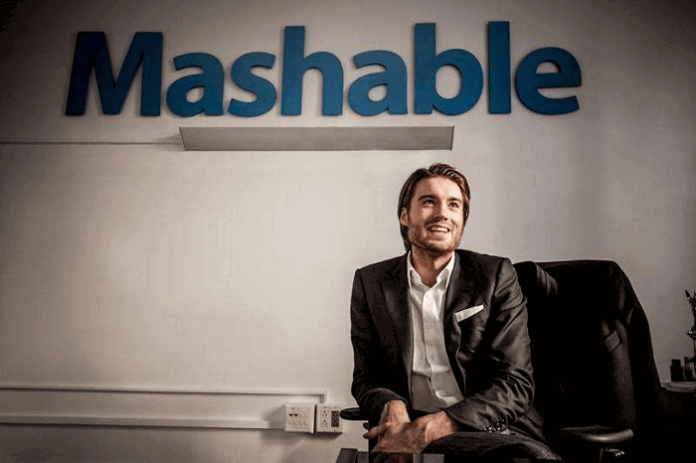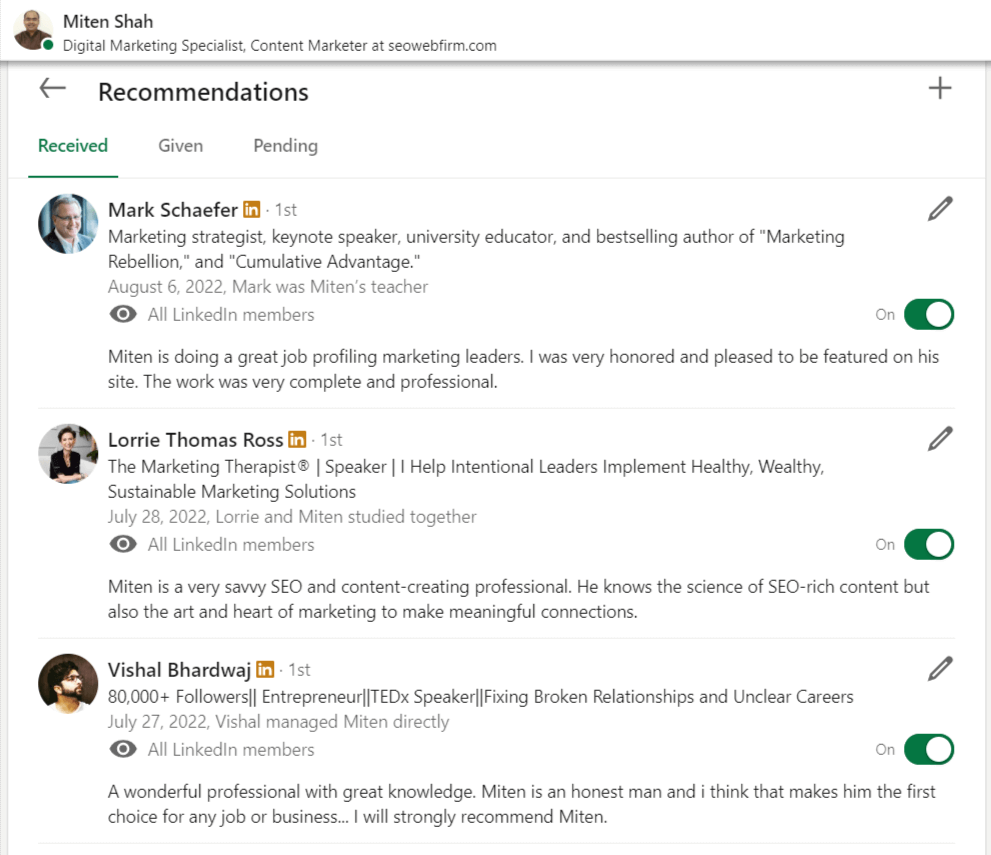“I set up Mashable, and it was appealing partly because it was something I could do in bed and feel like I was achieving something.”
If you are a blogger, then you must have heard of Mashable.
This is one of the leading news blogs about today’s technology and how it can benefit your life.
The site also leans heavily towards innovation and creativity and has hosted a lot of awards where they reward people and businesses who have made a major impact in the world using their new creations.
Mashable was formed by Pete Cashmore out of his bedroom at the age of 19.
Here is the story of Pete Cashmore and how he formed and grew Mashable.
Pete Cashmore Net Worth
Pete Cashmore is listed to be worth about $120 million. His total worth is available but one cannot tell how much he is remunerated as salary and other financial earnings from Mashable.
Pete Cashmore has been named in Inc’s list of “30 under 30”, Time’s “100 Most Influential People,” HuffPost’s ‘Top 10 Game Changers 2009″ among many others.
Pete Cashmore sold Mashable at a fire sale for $50 million to Ziff Davis.
OUR RECOMMENDATIONS
Who is Pete Cashmore?
Pete Cashmore is the founder of Mashable, who built the company from his bedroom at the age of 19.
Despite having an easygoing demeanor, he always has a quiet sense of urgency when he goes about his daily activities.
Although Pete has won several accolades from reputable media organizations, he says that these do not mean much to him.
He says that success is a moving target, and this is what drives him to be “on top of everything, all the time”.
The Early Life of Pete Cashmore
Pete Cashmore was born on September 8th, 1985 in Banchory.
He then attended the Banchory Academy but was in and out of the hospital due to an operation that he had when he was 13 years old.
Life for Pete became one of spending more time bedridden in his bedroom with the internet being his constant companion.
Since he missed out on much of high school, he graduated two years after his peers did. He did not give up on his education besides being sickly all the time, which he says is because he learned how to be “ridiculously persistent”.
His fascination with the Internet made him skip out of going to college and he started Mashable instead.
He started the blog in 2005, curating technology from the experts in a manner that an outsider, who was not a geek, could understand.
Today, the company has over 45 million visitors every month and has offices in New York and San Francisco.
His great idea when he started the company was to distribute news and information about digital inventions to a network of socially connected people.
The Story of Pete Cashmore and The Growth of Mashable
When Pete Cashmore was beginning to build Mashable, he used to lock himself in the bedroom of his parent’s home and work into the early hours of the day.
His parents never knew what he was up to and he did not let them know. He kept putting it off, saying that one day, when it finally became successful, he would let them know.
It was only after a reporter from the Daily Mail knocked on their door, seeking an interview with Pete about Mashable, that his parents came to know about it.
Pete’s Obsession with Numbers
Pete Cashmore attributes the success of Mashable to his obsession with the statistics of his website. He would always look at them and see chart ways to improve the numbers until the time he would finally make it. – “one step at a time”.
He got motivation from documenting the relevance of Social Media Channels like YouTube, Facebook, and Myspace, which were the giants of note at the time he started his blog.
Pete’s Huge Virtual Real Estate
In 2009, Mashable was getting a traffic volume of 5 million unique visitors per month.
Pete’s popularity grew just as Mashable was growing, earning him some creative nicknames from smaller media publications such as “The Internet Playboy” and “The Planet’s Sexiest Geek”.
Cashmore’s face soon became as popular as his blog; his good looks and fane of Mashable worked well together in propelling the business to greater heights.
Social media, one of the main topics that he discussed on the blog, soon became his main avenue for promoting his blog, and his fans loved it.
In the year 2010 Mashable was named No. 3 in the Forbes “Web Celebs 25” list.
In 2012, Mashable had grown into one of the biggest Internet Real Estate properties.
Time Warner’s CNN took note of this competition and even threatened a hostile takeover of Mashable.
CNN felt threatened by Mashable as a source of news on the Internet and tried to buy the blog from Pete at a price that has never been disclosed. Suffice it to say that they were not successful in this bid.
Throughout the time that CNN tried to take over the site from him, he gained a total of 2.7 million followers, which outdid his competitor in CNN, Ricky Gervais.
The Fruits of Hard Labor
Pete Cashmore has always been known to be a workaholic. He is known to stay up until 3 or 4 am finishing up on something that he felt was crucial to the growth of his business.
Then he would sleep quite early on the next day to make up for the sleep lost the previous night.
His colleagues and friends also say that this is an attribute that helped in the phenomenal growth of Mashable.
Today, Mashable still operates on the same principles of an emerging startup.
The workers always put in the hard work and overtime that was inculcated by Pete, when the company’s beginning.
This principle has helped Mashable to stay ahead of its competition, even after Pete sold it off to Ziff Davis.
AOL also offered to buy Mashable, in order to add it to its collection of media powerhouses. It had just bought TechCrunch, a blog that carried news about the tech industry and Huffington Post.
Cashmore also turned down AOL – He preferred to stand alone as he had right from the beginning. He wanted the ideals that made him create Mashable not to be diluted.
How Mashable was compared to Huffington Post after it was purchased by AOL
When you look at the growth of Mashable and compared it to Huffington Post, and what it became after AOL purchased it in 2009, one would wonder if Arianna Huffington made the right decision or not.
Let us take do a little comparison.
When Huffington Post was bought by AOL, Arianna Huffington was retained as the editor-in-chief and had to follow the new modus operandi as set up by AOL.
Read Also – Arianna Huffington: Making of a Powerful Writer, Corporate Figure and Political Influencer
On the other hand, Pete Cashmore turned down AOL, maintained leadership of Mashable, and ran it as he always did, making it reach greater heights than HuffPost.
Merging with AOL gave Arianna financial backing that she probably felt that she did not have on her own, but in keeping his stand by Mashable Cashmore kept the heart and soul of his business, which he had worked hard for since its inception.
The truth is that merging is like a two-edged sword. On one hand, you gain something and on the other, you lose another – your initial identity.
The fact that Mashable did not merge with AOL made a huge difference in its growth during the following years.
Both these companies continued to flourish, albeit at different rates.
Mashable maintained its success at the helm of a very capable and driven man, who began the company using a laptop in his parents’ home, which he would work with on his bed, given that is where he spent most of his time because of his health complications.
Awards and Achievements of Pete Cashmore
As we have seen, Pete Cashmore and Mashable gained a lot of awards and nominations from other media outlets thanks to the meteoric rise of the company and his profile as an entrepreneur.
However, just like Pete never thought much of these accreditations, Mashable went ahead and created awards that would honor those who have done exceptional work on the Internet.
The most notable of these is the International Open Web Awards.
The first one was launched on 27th November 2007 and was aimed at honoring the best online services and communities.
Voting was done online on Mashable, together with 24 other blog partners.
The first awards were given out on 10th January 2008 at the Palace Hotel in San Francisco.
The winners included Facebook, Digg, Twitter, Google, ESPN, YouTube, Pandora, and Cafemom.
The 2nd Annual Open Web Awards ran between November and December 2008. The international competition had a number of categories this time, and the winners in the “People’s Choice” component were as follows:
- The Wiki Category was won by Encyclopedia Drammatica.
- The Social News and Social Bookmarking Category was won by Digg.
- The Mainstream and Large Social Networks category was awarded to Netlog.
- The Places and Events Category went to MySpace.
The 3rd Open Web Awards was held in November and December 2009.
Pandora won the best music app or site
Fish Wrangler won the best Facebook game
And the YouTube award went to “surprise proposal in Spain” – one of the most viewed videos on YouTube that year.
The 4th iteration of the Open Web Awards changed its name to the 4th Annual Mashable Awards.
It was launched on 27th September 2010.
The categories included
Best Mobile Game, Most Promising New Company and Entrepreneur of the Year, and Best Web Video.
Winners were:
- Hootsuite for the Best Social Media Management Tool
- ReachLocal for the Best Social Media Service for Small Business
- Angry Birds for the Best Mobile Game
- Apple iPad for the Best New Gadget.
Notable YouTube appearances by Pete Cashmore
Pete Cashmore, Founder & CEO of Mashable, Espresso Shot with 105 Conversations.
Pete Cashmore has an interview for Espresso Shot, where he has 105 conversations about the future of tech, education, innovation, and leadership.
He comes across as a very humble person, despite being the owner of such a successful blog as Mashable.
He talks about his humble beginnings and his journey to where he was at the time of the interview.
Pete Cashmore, the founder of Mashable, gives advice for entrepreneurs
In this video, Cashmore offers great advice to startup entrepreneurs who want to jump in and build a formidable business. It goes on to say that there are no limitations as to what you can do given the resources that you have today, no matter how meager they are.
Remember that all he had was a laptop, an idea, and a lot of time.
Two days in the life of Mashable CEO, Pete Cashmore
In this video, you get an interview of Pete Cashmore as arrives in San Francisco to host MashMeet. Then he has a party after the Google I/O conference, and finally takes coffee and has an interview with Bloomberg.
Mashable’s Pete Cashmore: Natural Born Entrepreneur – 30 Under 30 | Forbes
Pete Cashmore has an interview with Michael Noer, an editor with Forbes, after he was featured in the Forbes “30 Under 30” list.
He goes on to reveal that Mashable was not his first business – quite an interesting interview which you should watch.
Notable Publications by Pete Cashmore
Twitter Tips Tricks And Tweets May – Pete Cashmore and Paul McFedries (2009)
This is a portable guide filled with information on how you can use Twitter for business and fun. It has been used by a wide range of people keeping in touch with their friends, family, and colleagues, and some of the ideas suggested were used by fundraising charities and organizations when responding to national disasters.
Notable Quotes by Pete Cashmore
“Not only did I not have connections, I wasn’t in the Valley (Silicon Valley). But I did have an outsider perspective, and as it turned out that was an advantage because there’s a mass-market that wants to know what the coolest gadgets are and how to use Facebook, Twitter, and others to get ahead.”
Pete Cashmore leveraged this ideology to make Mashable one of the leading sites for people who wanted to understand how to use social media in business.
This led to the meteoric rise of the number of people who followed Mashable within a relatively short time.
“Execution really shapes whether your company takes off or not. I’m very much a creative person, but you’ve got to do the follow-through. A lot of people start out with an exciting thing and they want to take over the world, but really the people who do take over the world have a good plan of how to get there and the steps along the way.”
This is another principle that he followed, and basically, it means that you need to be persistent and not give up on a great idea simply because the journey is challenging.
“There’s an advantage to having a certain degree of naivete about the challenges and the way things were before, so you can build something in a completely different way.”
This is an approach that made him very good at what he did. Approaching a topic with naivete allowed him to understand it from a layman’s point of view and create the exceptional content that his followers loved.
There are two other quotes that Pete has made about his success that are quite impressive. These are:
“I set up Mashable, and it was appealing partly because it was something I could do in bed and feel like I was achieving something.”
This is a great quote because it speaks to how he made the best out of a bad situation.
“I’m just not good at obeying authority figures.”
This is a quote that puts him in the class of Steve Jobs and Mark Cuban, who went against authority figures and made an impact in the online world.
In Conclusion
Pete Cashmore is the epitome of a person who focused on a small idea, from the confines of ill health and his bedroom and built it into a world-renown business.
He started by concentrating on the statics of his blog and aimed at making them better – a crucial lesson to bloggers who do not look at the numbers concerning their own blogs.
You should also create a timeline of your blogging successes and failures, the lessons you have learned, and how you have risen above the challenges over the years.
This is a great motivator that will help you push on even when times are difficult.
One day, all your patience and efforts will pay off.
















